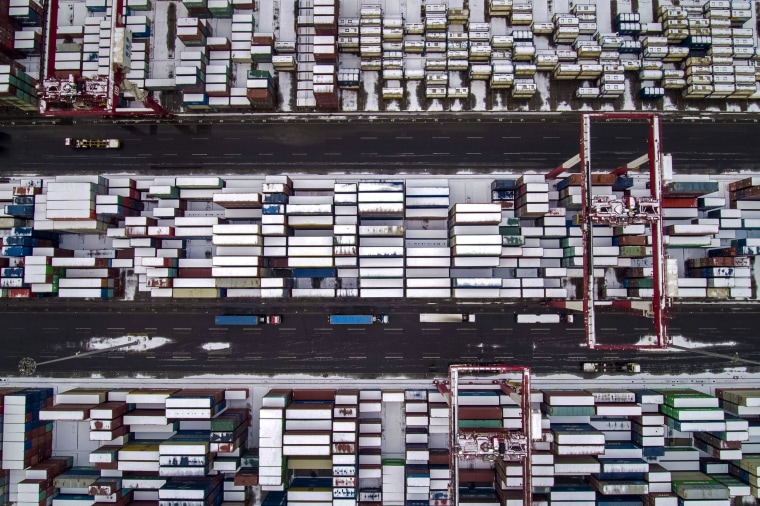Reports of a potential China trade deal gave a temporary boost to markets on Monday on the hope of tariff relief for American industries and companies, although trade experts were skeptical that President Donald Trump's long-term goal of getting China to make structural changes to its export-based economy would be achieved.
Erin Ennis, senior vice president of the U.S.-China Business Council, expressed cautious optimism on reports of progress toward a deal. “Based on conversations we’ve had, which have been general, it sounds like they are working on a framework agreement that would get at most of the issues,” she said, including protection of intellectual property rights, forced technology transfers, market access issues, subsidies and general state-sponsored favoritism that puts American companies at a competitive disadvantage.
Trade experts say a real breakthrough on trade would be a big step forward — but the devil is in the details.
“If this signals that the U.S. and China are entering into a more solid, credible negotiating process… that’s good for both countries and, indeed, for the global economy,” said Jacob Kirkegaard, a senior fellow at the Peterson Institute for International Economics.
Trade and market observers are looking ahead to the end of the month, when Trump and China's President Xi Jinping are expected to meet. A new report from Goldman Sachs put the odds that the two leaders would issue an announcement of a formal agreement at 75 percent.
Trump has political as well as economic motivations to forge a deal, as anxiety mounts about the toll the tariffs are taking on economic growth. “Coming at it from a political risk standpoint… I was struck by how bipartisan the fears about China have become,” said Michael Hessel, political economy analyst at Absolute Strategy in London.
Trump also is likely looking ahead to the 2020 election, as he and his trade advisers have touted purported benefits of a trade deal on the automotive, energy and agricultural sectors. “It’s obviously constituencies that are important for him in the upcoming election,” Kirkegaard said.
The success of any deal will ultimately hinge on the granular details about obligations and enforcement mechanisms, and Goldman Sachs pointed out that any trade announcement issued by Trump and Xi almost certainly would be light on those critical details. “We expect that whatever is agreed at that point will lack specifics in many areas and that additional technical work will still need to be done after the presidential meeting takes place,” it said in its report.
In fact, an agreement that is too broad could hurt American interests. “If the language is too vague, there’s always the risk China and the U.S. will interpret the terms of what they’ve agreed to differently,” Ennis said, a situation that could lead to disagreements in the future.
“Structural reform was supposed to be a key ask for the U.S.,” said Michael O. Moore, a professor of economics and international affairs at George Washington University. “What remains unclear is how far the Chinese are willing to go in areas that they seem to think are core long-term interests but are of grave concern to the U.S., including government subsidies in emerging technologies and intellectual property protection,” he said.
“It doesn’t seem to me that the U.S. government, if it agrees to remove most or all of the tariffs, is going to have much leverage against the Chinese,” Kirkegaard said. “If what you’re really agreeing to more or less is going back to the situation before tariffs… that doesn’t equal to me structural changes in the economy.”
Experts said if the U.S. is unable to extract concessions from China on these key elements, then the damage that tariffs have inflicted on the American economy will have been for naught.
“It’s inconceivable to me that the tariffs didn’t do real damage to the whole supply chain,” said Ian Shepherdson, chief economist at Pantheon Macroeconomics. “There’s been a huge amount of damage already.”
“You might get an increase in soybean or natural gas purchases, but the broader question of trade uncertainty, which does weigh on the economy and the markets, will not go away,” Hessel said. “I think the risks really start to come after the deal,” he said.
